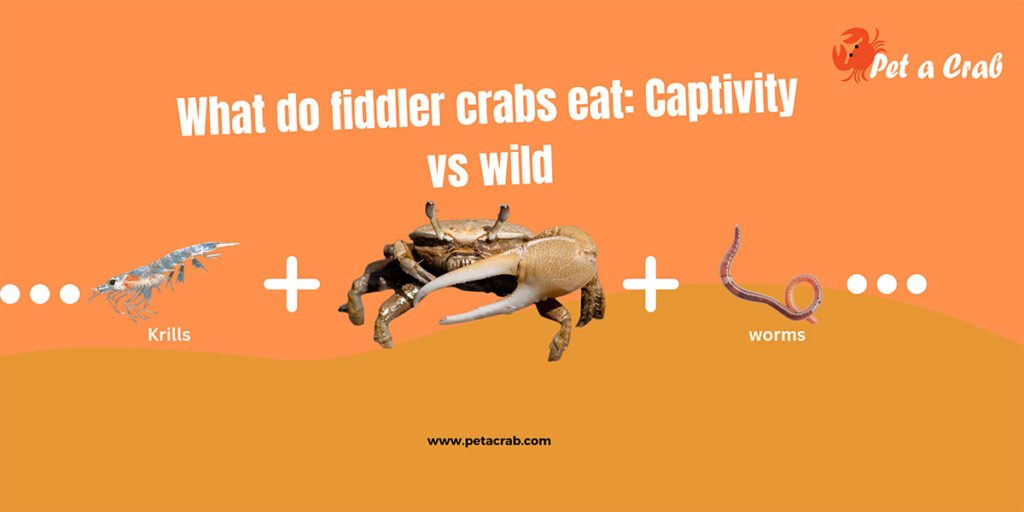If you think of a crab as a pet in the aquarium, it would probably be a hermit crab. Hermit crabs are joyous creatures known for their playful behavior. It is one of the most common pet crab species. Pet enthusiasts always want a hermit crab as a pet. However, this information is not enough to decide if you should have a hermit crab or not. Here we will talk about whether hermit crabs make good pets and what are the dark sides good sides.
Why you should keep a hermit crab
Longtime companion
Hermit crab can be a long-term commitment. Their average age is 11 years and some can live up to 20 years. So they will be a great emotional companion for a long time and give us nostalgia.
Playful creature
Crabs are always playful as pets but hermit crabs have something special in their instinct. They are always curious about something, climbing wood, and playing hide and seek in their hideout.
Becoming friend
Hermit crabs are not that type of animal, which become easily afraid of little movement and shy away. At first hermit crabs will not come to you, but as they get comfortable with you (fulfilling their necessity allows positive interaction and makes your presence comfortable) they will recognize you and will eventually end up becoming friends with you. This is one of the reasons why hermit crabs are good pet.

Smart creature
There is no scientific evidence but not just hermit crabs look curious and smart, but they are smart. Wearing shells to protect their vulnerable body indicates their level of thinking process. On sea shores, they gather in large numbers and exchange shells with each other which makes them social and intelligent animals. They can remember past experiences be they painful or good and act accordingly remembering the past experience.
But the best part is you can train them in certain habits by the rewards of the promised food. Hermit crabs can recognize you by your posture movement and voice tone.
Not harmful
As long as hermit crabs do not fear you they will stay calm. But before holding them be sure to clean your hand and then you can touch them barehanded in the shell as they do not carry any diseases. Sometimes, fear of aggressive holding may force them to leave a claw. Be careful not to hold or disturb the abdomen. If they do not feel safe with your holding they may try to pinch you.
No natural sunlight needed
You don’t have to keep your tank under direct sunlight and you can skip light and keep your crabitat in a dark room as hermit crabs can be harmed by sunlight and they do not benefit from this.

Things you should consider before buying hermit crabs
Hermit crabs have care requirements like special tank size, special substrate, temperature and humidity requirements water, and food. If they lack anything they may die after buying 6 to 12 months. Here are some basic requirements.
Specific tank requirement
Hermit crabs have specific tank size requirements. They cannot live well if the crabitat is overcrowded. You cannot keep hermit crabs with other animals especially those bigger than their size they will feel harmful. A 20-gallon tank is considered a healthy tank size for a pair of hermit crabs.
Substrate
Hermit crabs require eco-earth mixed with beach sand. This substrate needs to be moistened and needs at least 6 inches deeper. Because hermit crabs need to bury themselves during molting time.
Humidity and temperature requirement
They need high humidity (70 to 80%) and warm temperatures (75 to 85 Fahrenheit). Which should be maintained with a heating pad and thermometer for temperature and a mister bottle and hygrometer to monitor and keep balanced humidity. If the temperature falls from this range, hermit crabs will be lazy and less active, and if the temperature becomes higher, it will evaporate the humidity and dry air can affect their vulnerable body. Is hermit crabs a good pet.
Hermit crabs’ water requirements
Hermit crabs need two water bowls in their enclosure. One for fresh water and another for saltwater. They need both fresh and saltwater for drinking and other requirements as they are marine creatures. Fulfilling two types of water requirements can be tough sometimes.

Can’t live alone
Hermit crabs are social animals. As they live a longer life they need companions. You have to keep 2 to 4 hermit crabs in a tank. Otherwise, they will not live a longer and healthier life.
Dark sides keeping hermit crabs
The hermit crab is considered a cruel pet industry and buying one for you may support that industry.
- Captive hermit crabs don’t breed: There is still ongoing research on how to breed hermit crabs but the real technique is still far from reality. As it is not possible to breed hermit crabs for sale, some people capture them from the seashore and sell them to the stores.
The hermit crabs you see in the store are from somewhere around the globe and they are being captured and sold for some instant profit. For this reason, the number of hermit crabs is decreasing at in alarming rate. If this goes on in the future, hermit crab species might be endangered.
- Shell collection: In large number of shell is brought from the sea to fulfill the shell demand for hermit crabs. These shells are one of the reasons why ocean water is so clean. Bringing these shells directly affects the purification of the ocean water. Day by day the impact will be seen.
These things are not right and you don’t have to think too much to make the decision which is right or wrong. If you buy hermit crabs then you are supporting the industry and if you already bought some you don’t need to take it back to the ocean.
Now what should you do? Our suggestion is if you think you need a pet hermit crab and you are sure you can provide enough care and attention, and you think you can give them a good life, you should go for it. Exploring new things is fun. Surely you will love these creatures.


